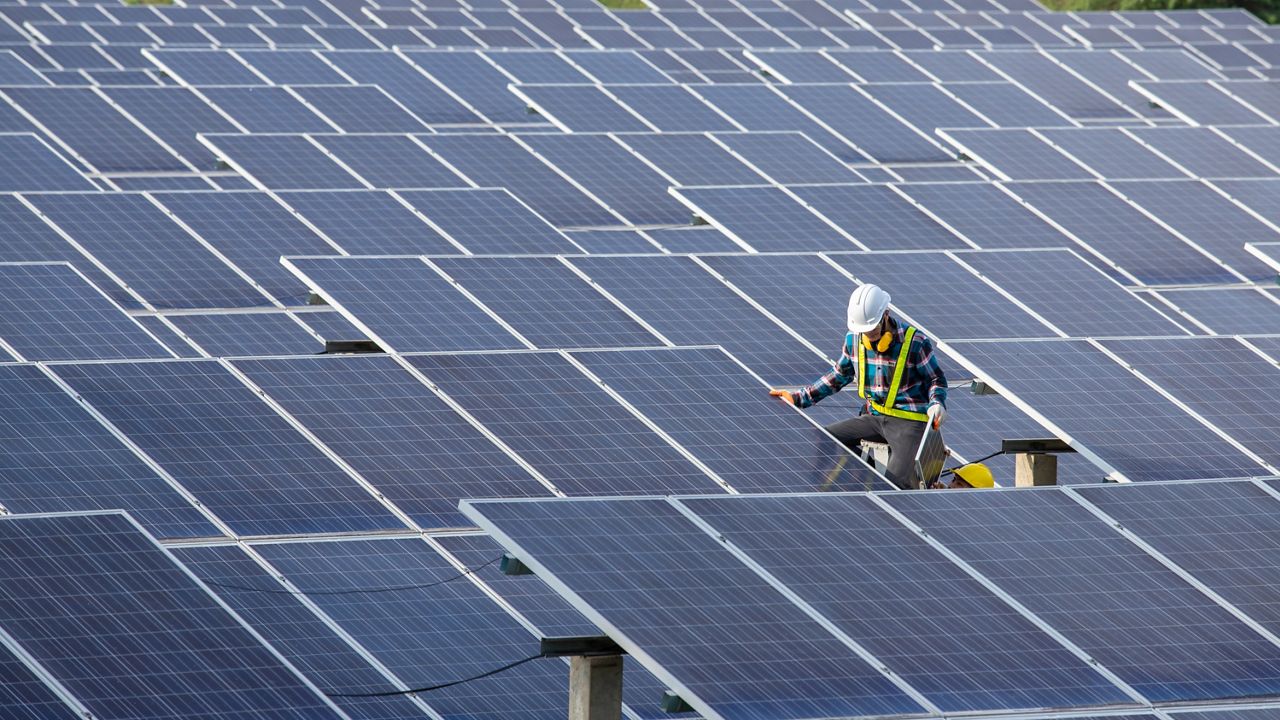After stalling out for months in a state senate committee, a bill that could cut greenhouse gas emissions in North Carolina sailed through the legislature in a matter of days.
Gov. Roy Cooper and General Assembly leaders on both sides of the aisle announced a deal last week on a new clean energy bill, now called the Energy Solutions for North Carolina bill.
“This bipartisan agreement sets a clean energy course for North Carolina’s future that is better for the economy, better for the environment, and better for the pocketbooks of everyday North Carolinians. I am encouraged that we have been able to reach across the aisle to find a way forward,” Cooper said in a statement last week
Senate Leader Phil Berger, a Republican, said in his own statement, “North Carolina is a growing state, attracting businesses and families from all over. That growth depends on a stable supply of reliable and affordable energy.”
“After months of policy negotiations, we reached an agreement that will signal to businesses and families here now or considering a move here that North Carolina’s leaders are committed to pro-growth energy policies,” Berger said.
The bill calls for reducing greenhouse gas emissions 70% by 2030, based on 2005 levels, and to get to carbon neutrality by 2050.
“Carbon neutrality” in the bill means that for every ton of carbon dioxide emitted, public utilities would have to reduce, remove or prevent the same amount of emissions. Utilities could also buy carbon offsets for up to 5% of their emissions reduction goal.
It will be up to the state Utilities Commission to come up with a plan and make the rules for how to hit those targets. The commission has until the end of 2022 to come up with the plan.
Those goals line up with the governor’s Clean Energy Plan, proposed in October 2019..
As part of the commission’s plan, Duke Energy and other utilities will have to shutter some coal-fired power plants.
An earlier version of the bill, passed by the House over the summer, specified which power plants would have to be shut down and when. It also said which renewable energy sources should be used to replace the plants. The new version of the bill leaves that up to the Utilities Commission.
“Renewables must now compete head-to-head on a level playing field against other forms of energy generation and resources, including nuclear and natural gas,” said Republican Sen. Paul Newton, a retired executive from Duke Energy, according to the Associated Press.
Through the plan, large-scale solar and other renewable energy sources would become a much more important part of North Carolina’s electric grid.
For solar, the bill says utility companies will be required to buy 45% of their solar power from smaller solar producers. Utilities, like Duke Energy, could generate 55% of the solar power on their own.
The governor issued an executive order over the summer to push the state to develop offshore wind as a source of power.
“The Order establishes offshore wind development goals of 2.8 gigawatts off the North Carolina coast by 2030 and 8.0 GW by 2040. Achieving these goals will power roughly 2.3 million homes by 2040,” the Commerce Department said in a statement over the summer.
Rates could go up under the new bill, according to the AP.
The bill gives Duke Energy the ability to ask for rate increases in three-year blocks instead of having to ask for rate increases every year.
The Utilities Commission estimated that Duke Energy customers could see rates go up by 4.5% by the end of this decade under the House bill, according to the AP There is no estimate yet on what the impact could be on electricity rates.
An industrial customers group said the price increase could be several times what was estimated for the House bill, the AP reports.
The bill has passed quickly through committees since the deal was announced last week. It passed the Senate Wednesday afternoon.
The bill has bipartisan support in the House and Senate and the backing of the governor, so it will likely move easily through the rest of the process to get to Cooper’s desk. The bill will become law as soon as the governor signs it.



